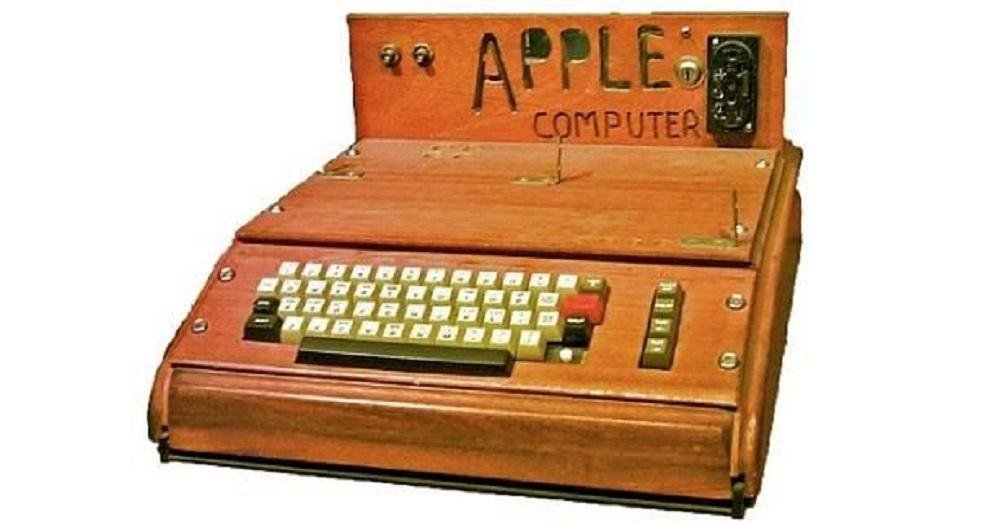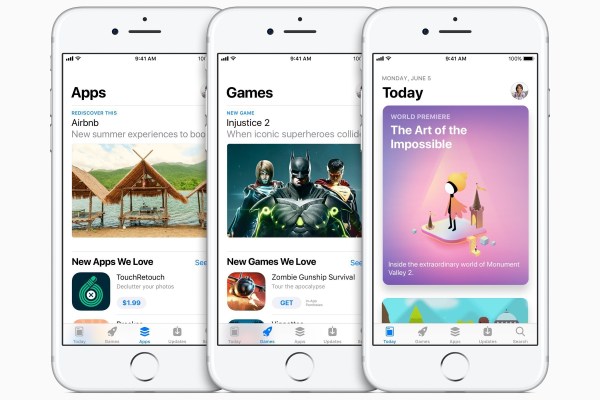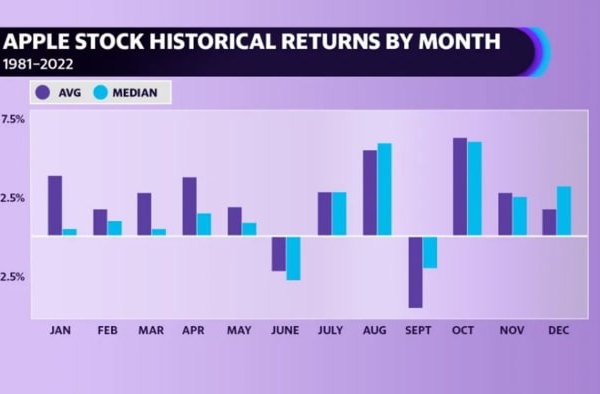
The Apple-1 stands as a monumental milestone in Apple computer history, marking the company’s foray into the world of computers on April 11, 1976. Designed by the visionary Steve Wozniak, this groundbreaking machine was sold through the entrepreneurial spirit of Jobs, who repurposed their personal items to finance its creation. With its rudimentary specifications, including an 8-bit MOS 6502 microprocessor and optional memory expansion, the Apple-1 challenged conventional computing by allowing users to connect it to a standard television set instead of a dedicated monitor. This vintage computer not only showcased Wozniak’s ingenuity but also laid the groundwork for future personal computing innovations. Notably, years later, a functioning Apple-1 fetched an astounding $905,000 at auction, solidifying its legacy among collectors and enthusiasts alike.
Known as the original Apple machine, the Apple-1 revolutionized the tech landscape when it debuted in the mid-1970s. Crafted by Steve Wozniak, this pioneering device was not only an early example of personal computing but also a testament to the spirit of innovation that characterized the era. With its basic microprocessor and potential for memory enhancement, the computer invited hobbyists and tech enthusiasts to experiment and explore. Rarely seen today, vintage models like the Apple-1 have become coveted artifacts, serving as a reminder of the rapid evolution of technology and the visionaries who paved the way for today’s advanced devices. As the first commercial product of Apple Inc., it forever altered the trajectory of computing.
Apple-1: A Revolutionary Milestone in Computer History
On April 11, 1976, the launch of the Apple-1 marked a pivotal moment in digital technology, ushering in the era of personal computing. Designed and meticulously hand-built by Steve Wozniak, this computer was unlike anything seen at the time. Unlike large, cumbersome systems used in businesses, the Apple-1 was compact and accessible, targeting hobbyists and individuals. Wozniak initially envisioned showcasing the Apple-1 to fellow enthusiasts at the Homebrew Computer Club, demonstrating that a practical and affordable computer could be assembled with just a few chips, resonating with the burgeoning spirit of innovation in Silicon Valley.
The impact of the Apple-1 can’t be overstated; it laid the groundwork for what would become Apple Inc. and the evolution of modern computing. Wozniak’s design philosophy prioritized user accessibility, allowing users to connect a standard television as a monitor and use their own keyboard, which was revolutionary for home computing at the time. This made the Apple-1 not just a product, but a beacon of democratizing technology, influencing countless vintage computers that followed. Today, collectors and enthusiasts alike revere the Apple-1, marking it as the progenitor of an industry that would transform the entire world.
Steve Wozniak: The Genius Behind the Apple-1
Steve Wozniak, often affectionately dubbed ‘Woz,’ played a crucial role in creating the very first Apple computer. With a background in electrical engineering and a strong passion for electronics, Wozniak’s ingenuity allowed him to craft the Apple-1 as both a personal project and a demonstration of what was technologically possible at the time. His initial motivation was pure experimentation—showcasing a feasible computer design at the Homebrew Computer Club and proving that anyone could build their own computer with sheer creativity and will.
In his autobiography, ‘iWoz,’ Wozniak reflects on this journey, emphasizing the joy of innovation rather than commercial success. His decision to partner with Steve Jobs proved pivotal; while Wozniak thrived on the technical side, Jobs brought the vision and business acumen necessary to transform their hobby into a profitable venture. The results of their collaboration catalyzed a new chapter in computer history and solidified Wozniak’s place among the legends of technology.
The Specifications That Set the Apple-1 Apart
The Apple-1, while rudimentary by today’s standards, was groundbreaking in its specifications during the late 1970s. Powered by an 8-bit MOS 6502 microprocessor that operated at 1 MHz, the Apple-1 offered a standard memory of 4KB, expandable up to a staggering 48KB. This flexibility allowed users to tailor their setups, contributing to the DIY ethos of early computing enthusiasts. The ability to connect to a regular TV as a monitor made the Apple-1 an accessible option for average consumers, differentiating it from the more complex systems of the era.
Expanding on its specifications, the Apple-1’s architecture was designed for ease of use, serving as a bridge between sophisticated computing and broader public engagement. Despite its limitations, the innovation of allowing customizable hardware options played a crucial role in defining its legacy. As vintage computers continue to capture the imagination of collectors and tech enthusiasts, the Apple-1 stands as a symbol of the power of creativity and the pursuit of knowledge.
The Historical Context of the Apple-1 Launch
The release of the Apple-1 came during a transformative era in technology. The 1970s were marked by rising interest in computing technology among hobbyists and innovators. With the Altair 8800 emerging earlier that year, there was significant excitement surrounding personal computers. The Apple-1’s introduction was perfectly timed, as consumers began to demand more user-friendly options that could transition from the realm of enthusiasts to the mainstream public.
Jobs and Wozniak’s keen insight into market demands highlighted the shift from massive multifunctional computers towards specialized, smaller systems that anyone could use. By presenting the Apple-1 as a fully assembled product, they capitalized on the growing trend of personal computing, paving the way for future iterations of Apple products. This foresight was instrumental in establishing Apple Inc. as a leader in the technology sector.
The Unique Selling Proposition of the Apple-1
The launch price of the Apple-1, set at $666.66, has become as legendary as the computer itself. This seemingly odd price point generated curiosity and discussion, reflecting Jobs’ clever marketing strategy. By positioning the Apple-1 in a more niche and premium segment, it appealed to early adopters eager to invest in the future of technology. With only about 200 units produced, the scarcity of the Apple-1 enhanced its allure, transforming it into a coveted collector’s item in today’s market.
Moreover, the decision to sell to retailers like The Byte Shop rather than directly to consumers created a ripple effect in the tech industry. The Apple-1’s unique selling proposition lay not just in its specifications but in its image as an exclusive product for forward-thinking individuals. This exclusivity laid the groundwork for Apple’s branding strategy, which continues to be a significant part of its identity in the tech landscape.
Apple’s Transition from Apple-1 to Apple II
The rapid evolution of the Apple-1 into the Apple II illustrates the fast-paced innovation of the tech industry. After the Apple-1’s introduction in 1976, it became apparent that the increasing demand for greater capabilities outweighed what the original could offer. The launch of the Apple II in 1977 marked a significant upgrade in performance and usability, with features like color graphics and open architecture. Customers were eager for systems that could handle more complex tasks, which the Apple II was designed to fulfill.
In its first year alone, the Apple II drastically outperformed its predecessor, with significant advancements in both retail and user experience. Apple’s introduction of the Apple II solidified their path towards becoming a dominant force in computing, emphasizing the necessity of iteration and improvement in technology. This transition period was crucial, allowing Apple to establish itself as a beloved brand among consumers.
The Legacy of Vintage Computers and the Apple-1
Today, the Apple-1 stands as a cherished artifact in the realm of vintage computers. Its significance extends beyond mere technical specifications; it embodies the spirit of early computer pioneers who dared to challenge the status quo. Collectors and museums alike revere it, showcasing the impact of the Apple-1 on the evolution of personal computing. Auctions fetching prices north of $900,000 highlight the computer’s legendary status among vintage enthusiasts, further emphasizing its rarity and historical importance.
The legacy of the Apple-1 is not only found in its physical form, but also in its lasting influence on software, user interfaces, and the overall design philosophy of subsequent Apple products. As technology continues to evolve, the Apple-1 serves as a reminder of the beginnings of personal computing, inspiring newfound generations of innovators to push boundaries and explore the frontiers of technology.
Understanding the Apple-1 Market Dynamics
The dynamics surrounding the Apple-1’s market debut reveal much about the early tech landscape. Initially, sales opportunities were limited to small retailers like The Byte Shop, where the concept of personal computers was still nascent. Jobs’ ability to negotiate the initial order of 50 units paved the way for crucial visibility of the Apple-1, allowing it to enter a market that was ripe for innovation but uncertain in its readiness for consumer tech.
This approach to sales fostered a unique community around the Apple-1, propelling it into popular culture. As word of mouth among early adopters spread, interest blossomed, establishing a community of Apple enthusiasts that persisted through the years. Understanding these market dynamics is essential when examining how technology companies engage with consumers and adapt to changing demands.
Culture Shift: The Apple-1 and DIY Computer Revolution
The Apple-1 not only represented a technological innovation but also sparked a cultural movement in the 1970s, epitomizing the DIY spirit of computing enthusiasts. By making computing accessible to the masses, Wozniak and Jobs catalyzed a revolution that encouraged individuals to engage with technology on a personal level. This shift fostered creativity and experimentation, leading to an explosion of new ideas and products within the tech space.
Subsequently, the principles of the DIY movement continued to influence a generation of developers, hobbyists, and tech entrepreneurs. The emergence of user-built computers, programming languages, and open-source software drew inspiration from this very ethos, allowing everyday individuals the agency to become innovators and contributors to the tech landscape.
Frequently Asked Questions
What are the key specifications of the Apple-1, the first Apple computer?
The Apple-1, launched on April 11, 1976, features an 8-bit MOS 6502 microprocessor operating at 1 MHz and comes with a base memory of 4KB, which can be expanded to 8KB or even 48KB through expansion cards. Unlike modern computers, users needed to supply their own keyboard and monitor, which could even be a standard television.
Who designed the Apple-1 and what was its significance in Apple computer history?
The Apple-1 was hand-built by Steve Wozniak as a hobby project, marking a significant moment in Apple computer history as it was the first computer produced by Apple. It aimed to demonstrate that a real, programmable computer could be made affordable, leading to the company’s foundation and future innovations.
How did Steve Jobs contribute to the launch of the Apple-1?
Steve Jobs played a crucial role in the launch of the Apple-1 by convincing Wozniak to sell the computer instead of simply giving away the designs. He secured a deal with Paul Terrell of The Byte Shop to sell fully assembled units, which catered to the growing demand for personal computers.
What was the launch price of the Apple-1 and how does it compare to today’s standards?
The launch price of the Apple-1 was $666.66, which would equate to more than $3,700 today. This pricing reflects both its innovative design and the nascent state of personal computing in the 1970s.
How many Apple-1 computers were produced and what is their status today?
Only about 200 units of the Apple-1 were produced, and the number of surviving Apple-1 computers today is significantly lower due to their age and the trade-in program Apple offered during the introduction of the upgraded Apple II.
What was the historical context of the Apple-1’s release in relation to vintage computers?
The Apple-1 was released during the early days of the personal computing revolution, positioning itself among other vintage computers like the Altair. It showcased the potential for affordable computing, influencing future technology with its innovative capabilities.
Why did the Apple-1 require users to supply their own peripherals?
The Apple-1 was designed as a minimalistic computing solution, allowing users to connect their own keyboard and monitor, such as a regular TV set, which made it accessible and customizable, reflecting the DIY culture of computing at the time.
What impact did the Apple-1 have on the personal computing market?
The Apple-1’s successful launch and sales paved the way for Apple’s later products, establishing the company as a major player in the personal computing industry and leading to the development of more sophisticated models like the Apple II.
What role did the Homebrew Computer Club play in the development of the Apple-1?
The Homebrew Computer Club served as a source of inspiration for the Apple-1’s design, where Steve Wozniak first demonstrated his concept of an affordable personal computer, influencing its creation and the ethos behind its market introduction.
How has the Apple-1 been valued in recent years at auctions?
The value of the Apple-1 has appreciated significantly over the years, with a working unit selling for a staggering $905,000 at auction in 2014, underscoring its historical importance as the first Apple computer.
| Key Point | Details |
|---|---|
| Release Date | April 11, 1976 |
| Creators | Steve Wozniak designed and built the Apple-1; Steve Jobs sold it wholesale. |
| Financing | Wozniak sold his HP-65 calculator for $500; Jobs sold his Volkswagen van. |
| Auction Price | A working Apple-1 sold for $905,000 at auction in 2014. |
| Specifications | 8-bit MOS 6502 microprocessor, 1 MHz, 4KB standard memory, expandable to 48KB. |
| Market Appeal | Targeted value for hobbyists; required users to provide own keyboard and monitor. |
| Launch Price | $666.66, equivalent to over $3,700 today. |
| Production | Only about 200 units were made; fewer units survive today due to trade-in offers for the Apple II. |
Summary
The Apple-1 marks a significant milestone in computing history as it was the first computer released by Apple. Launched on April 11, 1976, by Steve Wozniak and sold retail by Steve Jobs, it innovatively made computing accessible through its affordability and design simplicity. Despite its primitive specifications, the Apple-1 laid the groundwork for future developments in personal computing, leading to Apple’s remarkable growth and transformation into a technology giant.
You may also like

iOS App Store Success: A Milestone in Digital Distribution


First Email from Space: The Macintosh Portable’s Legacy
Archives
Calendar
| M | T | W | T | F | S | S |
|---|---|---|---|---|---|---|
| 1 | 2 | |||||
| 3 | 4 | 5 | 6 | 7 | 8 | 9 |
| 10 | 11 | 12 | 13 | 14 | 15 | 16 |
| 17 | 18 | 19 | 20 | 21 | 22 | 23 |
| 24 | 25 | 26 | 27 | 28 | 29 | 30 |